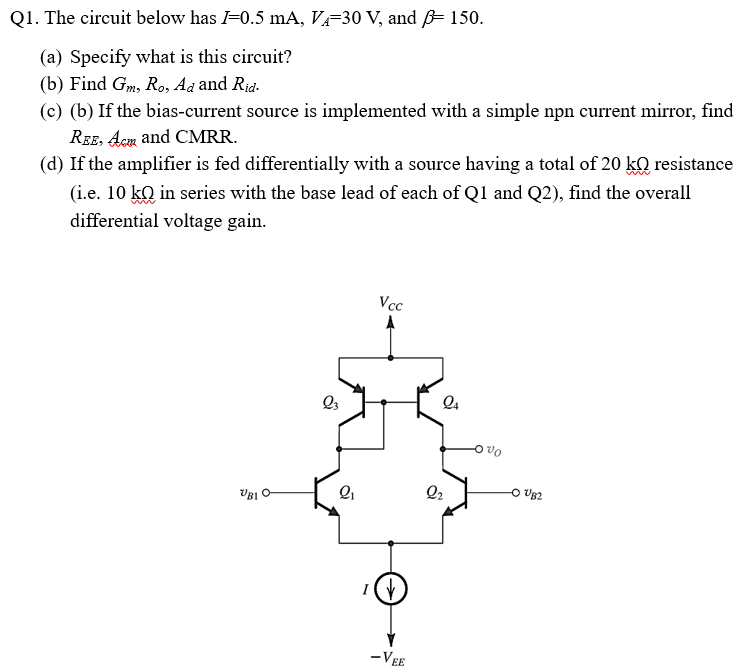Q1. The circuit below has I = 0.5 mA, VA = 30 V, and β = 150. (a) Specify what is this circuit? (b) Find Gm, Ro, Ad and Rid. (c) (b) If the bias-current source is implemented with a simple npn current mirror, find REE, Acap and CMRR. (d) If the amplifier is fed differentially with a source having a total of 20 kΩ resistance (i.e. 10 kQ in series with the base lead of each of Q1 and Q2), find the overall differential voltage gain.
